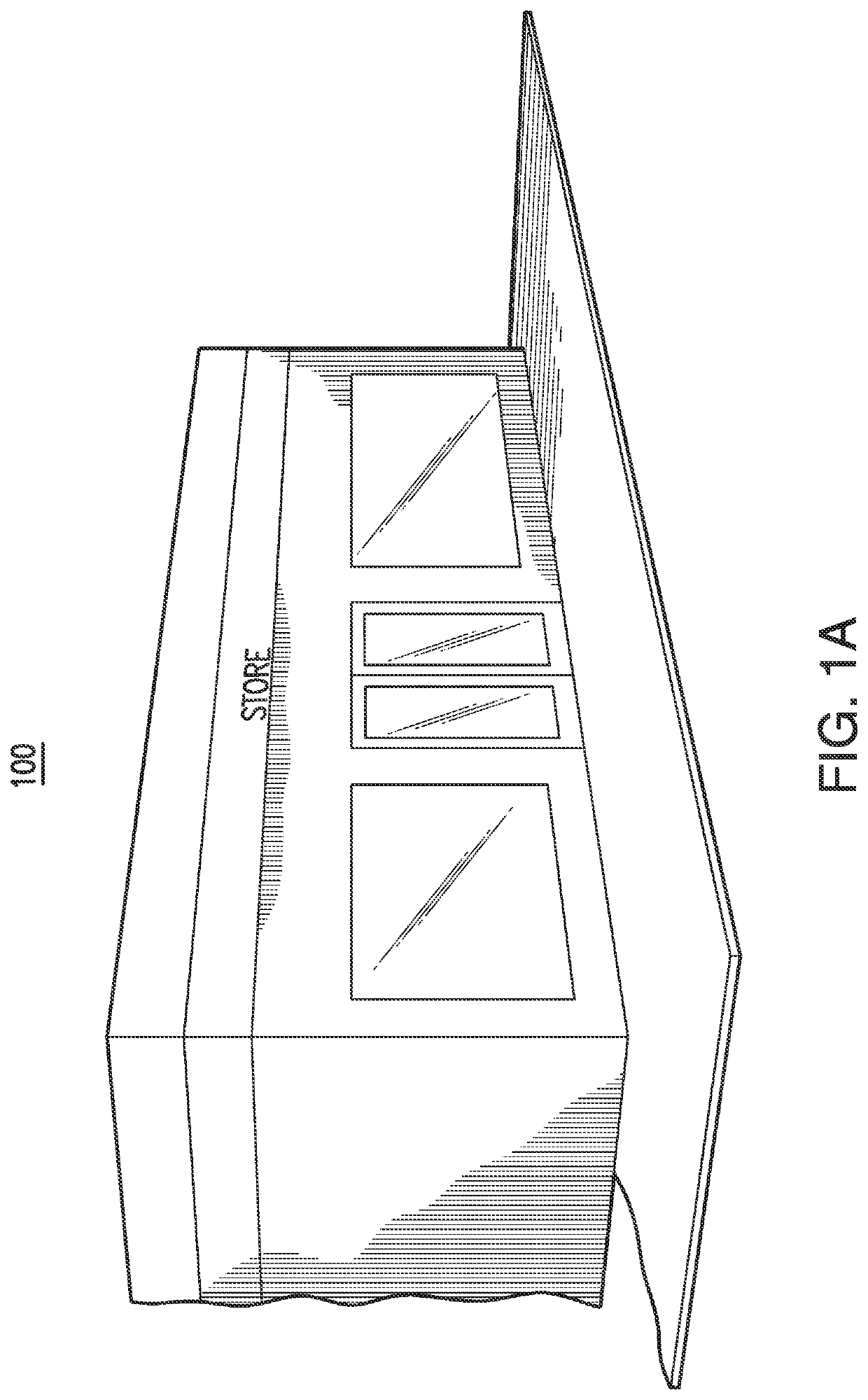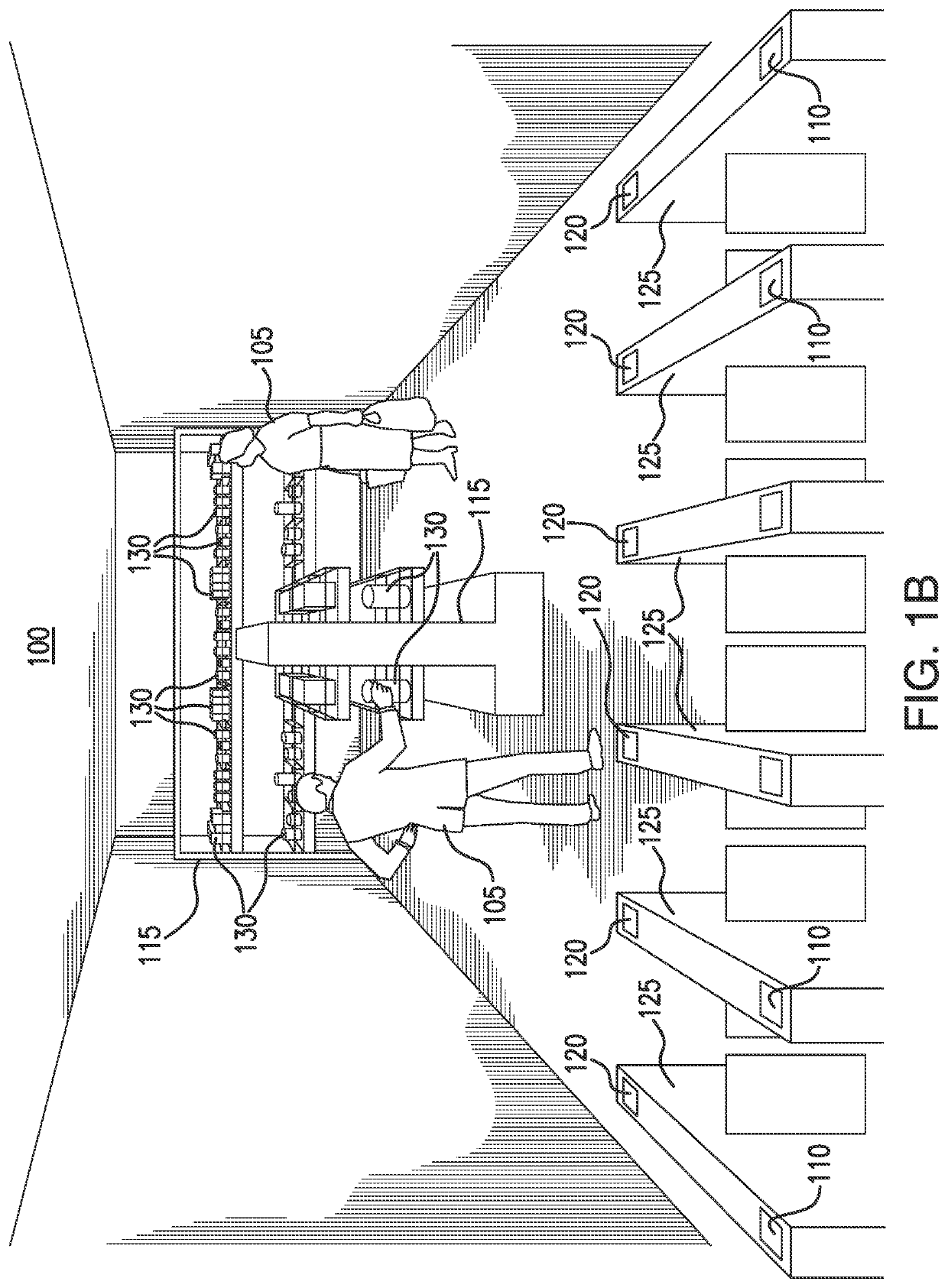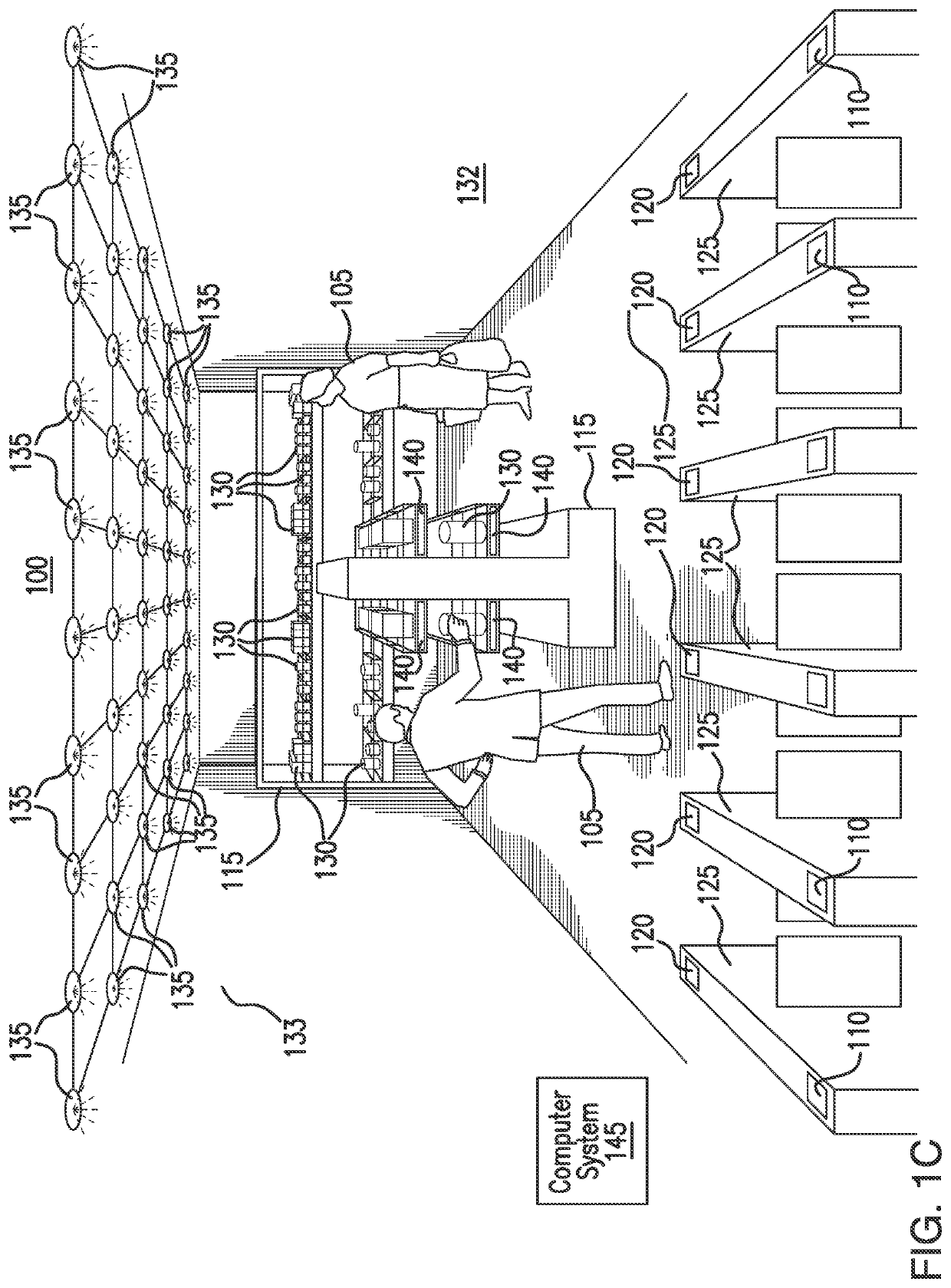Adaptive item counting algorithm for weight sensor using sensitivity analysis of the weight sensor
a technology of sensitivity analysis and weight sensor, applied in the field of adaptive item counting algorithm for weight sensor using sensitivity analysis of weight sensor, can solve the problems of limiting synchronization problems, and limit the number of sensors that can be added before the computing capabilities of the computer are reached
- Summary
- Abstract
- Description
- Claims
- Application Information
AI Technical Summary
Benefits of technology
Problems solved by technology
Method used
Image
Examples
Embodiment Construction
[0105]Embodiments of the present disclosure and its advantages are best understood by referring to FIGS. 1A through 21 of the drawings, like numerals being used for like and corresponding parts of the various drawings. Additional information is disclosed in U.S. patent application Ser. No. 16 / 663,633 entitled “Scalable Position Tracking System For Tracking Position In Large Spaces”; U.S. patent application Ser. No. 16 / 663,415 entitled “Sensor Array For Scalable Position Tracking System”; U.S. patent application Ser. No. 17 / 018,146 entitled “Sensor Array For Scalable Position Tracking System”, which is a divisional of U.S. patent application Ser. No. 16 / 663,415 entitled “Sensor Array For Scalable Position Tracking System”; U.S. patent application Ser. No. 16 / 991,947 entitled “Custom Rack For Scalable Position Tracking System”which is a continuation of U.S. patent application Ser. No. 16 / 663,669 entitled “Custom Rack For Scalable Position Tracking System”, now U.S. Pat. No. 10,783,762...
PUM
 Login to View More
Login to View More Abstract
Description
Claims
Application Information
 Login to View More
Login to View More - R&D
- Intellectual Property
- Life Sciences
- Materials
- Tech Scout
- Unparalleled Data Quality
- Higher Quality Content
- 60% Fewer Hallucinations
Browse by: Latest US Patents, China's latest patents, Technical Efficacy Thesaurus, Application Domain, Technology Topic, Popular Technical Reports.
© 2025 PatSnap. All rights reserved.Legal|Privacy policy|Modern Slavery Act Transparency Statement|Sitemap|About US| Contact US: help@patsnap.com



